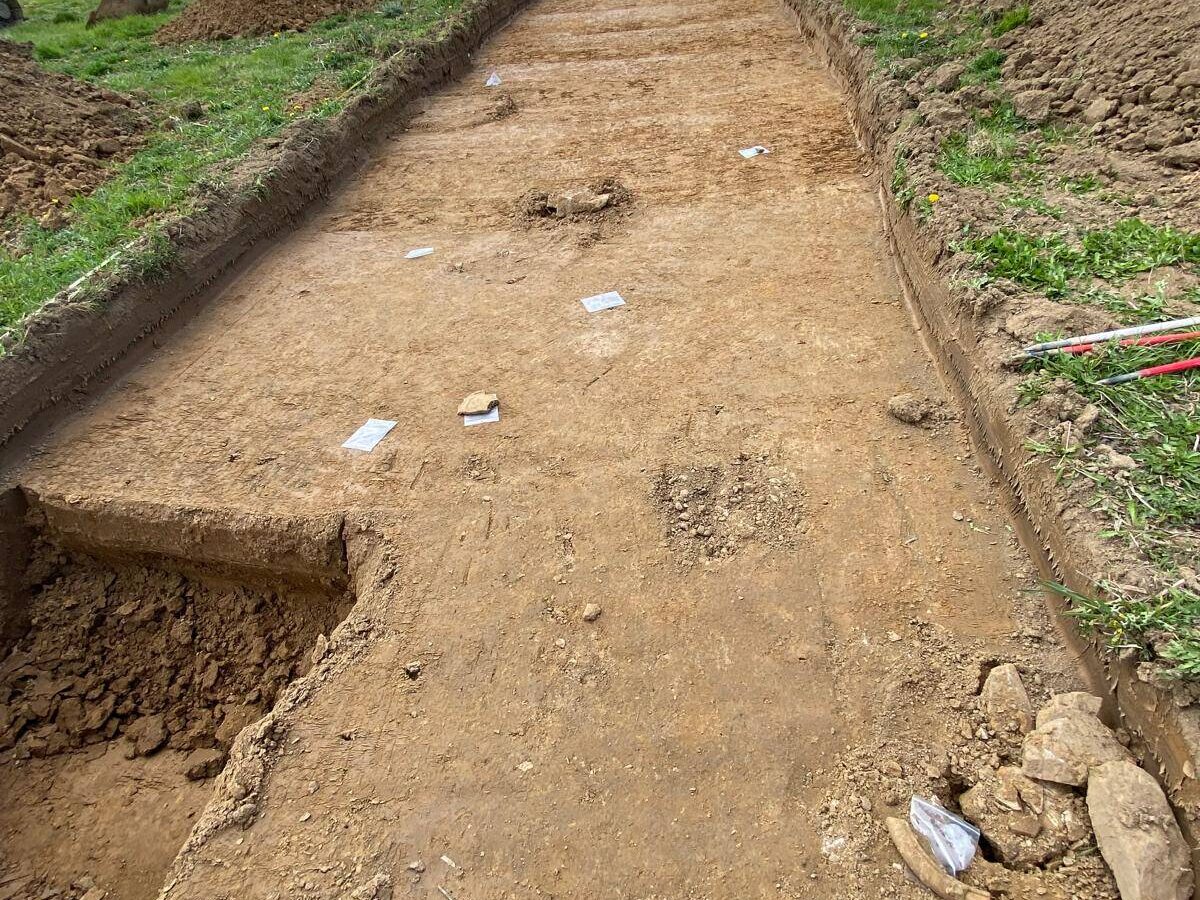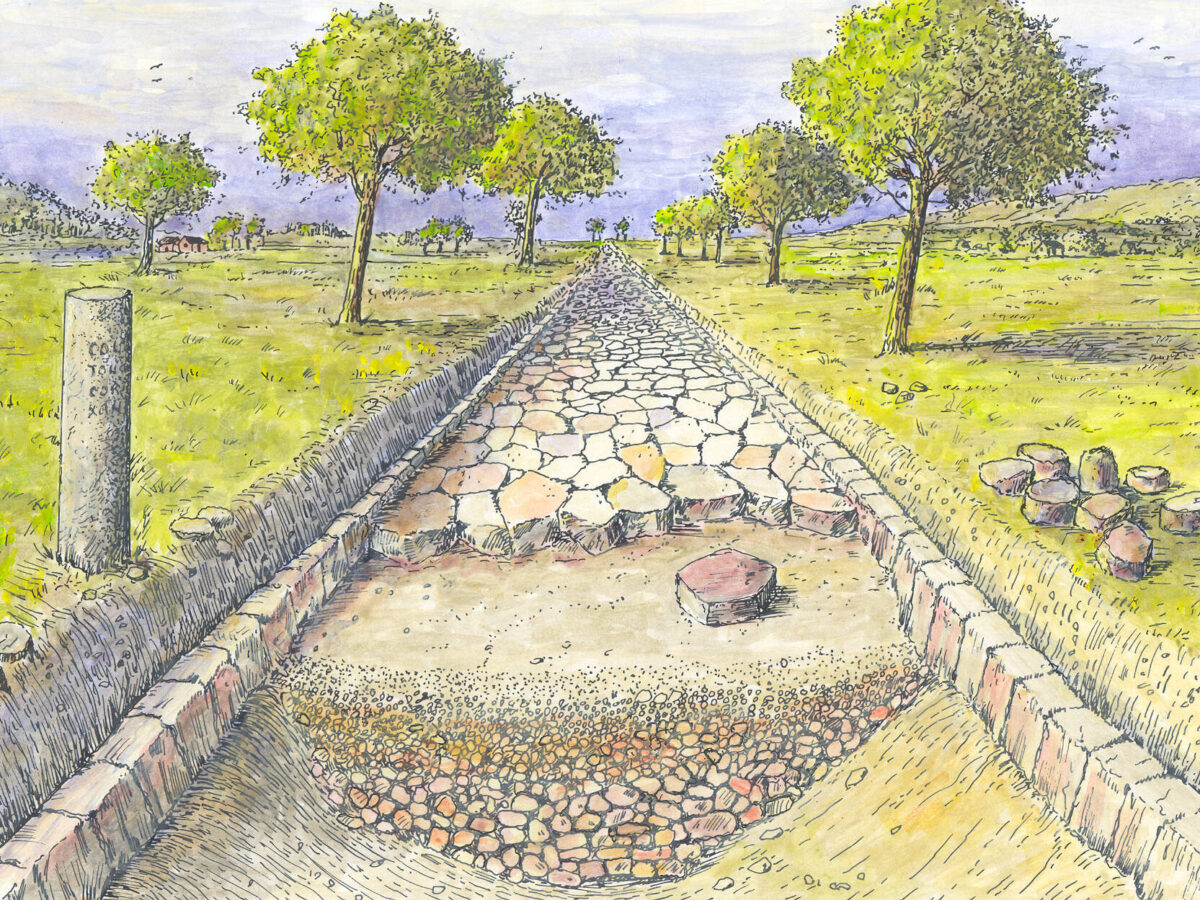Searching for a Roman Villa in Kerkrade
Author: Hilde Vanneste
Photography: Anja Neskens
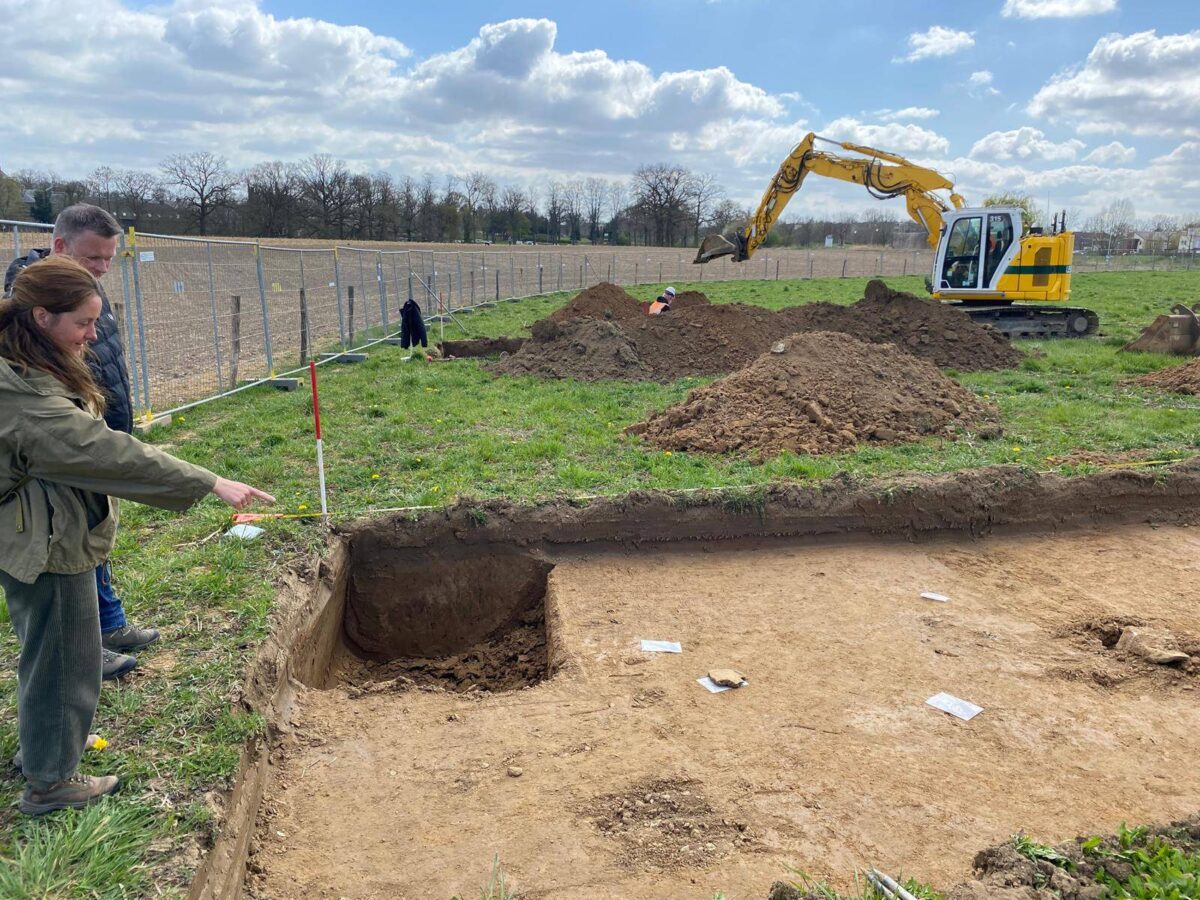
The past few weeks have been an exciting time at the site next to Rolduc Abbey in Kerkrade. Archaeologists worked with an impressive excavator to uncover a fascinating piece of history: a possible Roman villa. And with success!
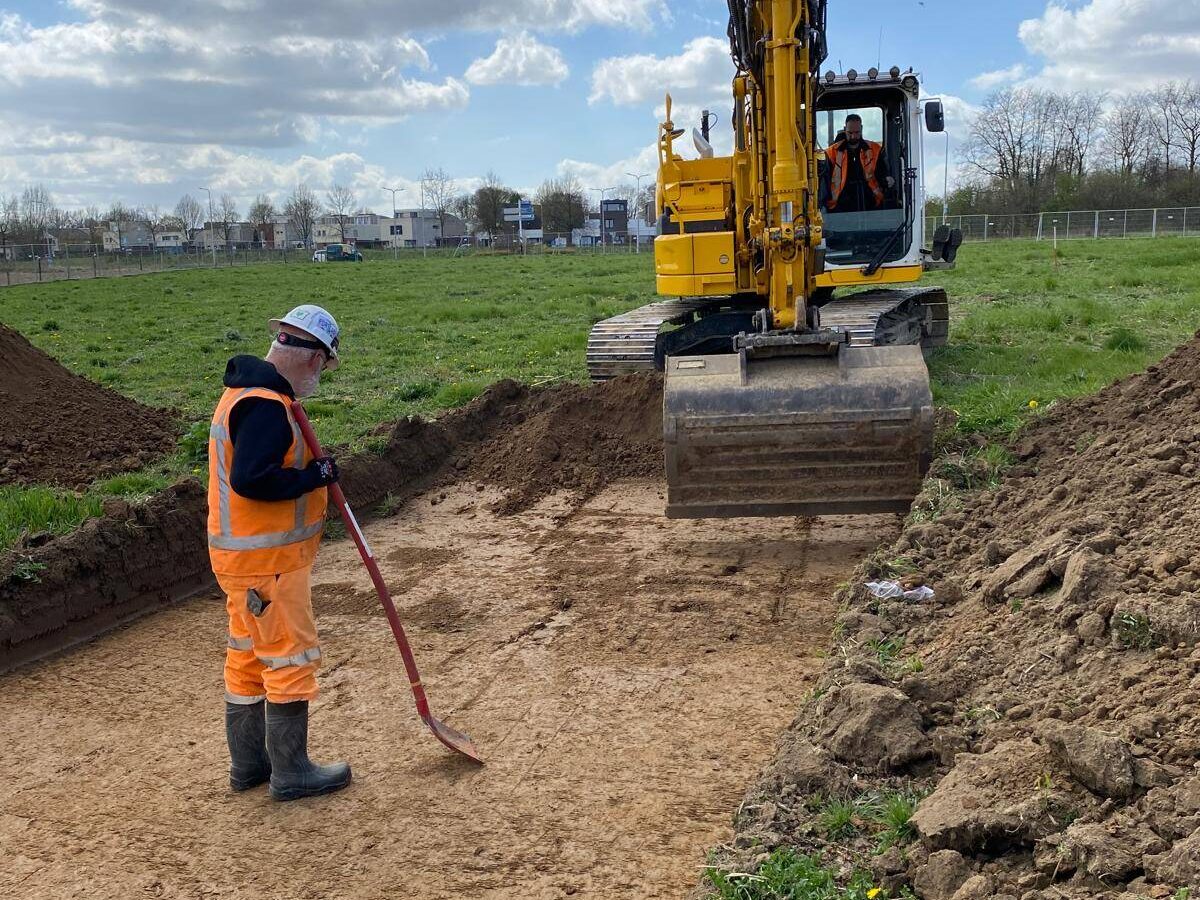
Why dig here?
This location had long attracted attention. Amateur archaeologists and earlier research had already brought to light various finds, such as Roman building material and even the remains of a horreum (a Roman granary), discovered during the construction of the Roderlandbaan. In 2018, geophysical research confirmed strong indications of buildings. More than enough reason to launch a large-scale archaeological investigation.
In search of traces of the past
On 24 March, archaeologists began their quest with great enthusiasm. The immediate reason? The planned creation of a memorial tree forest on the plateau. Digging tree pits would disturb the soil and could damage valuable archaeological traces. But why expect a Roman villa here in particular? Simple: the location is ideal! The Romans, too, saw this beautiful plateau as a perfect place for a farmstead.
Still, finding traces proved more difficult than expected. The first discoveries were not Roman at all, but older: two hand-formed urns with cremation remains from the Late Prehistory, possibly belonging to a cemetery. These urns were carefully lifted “in block,” so that specialists can study them further and determine their exact age.
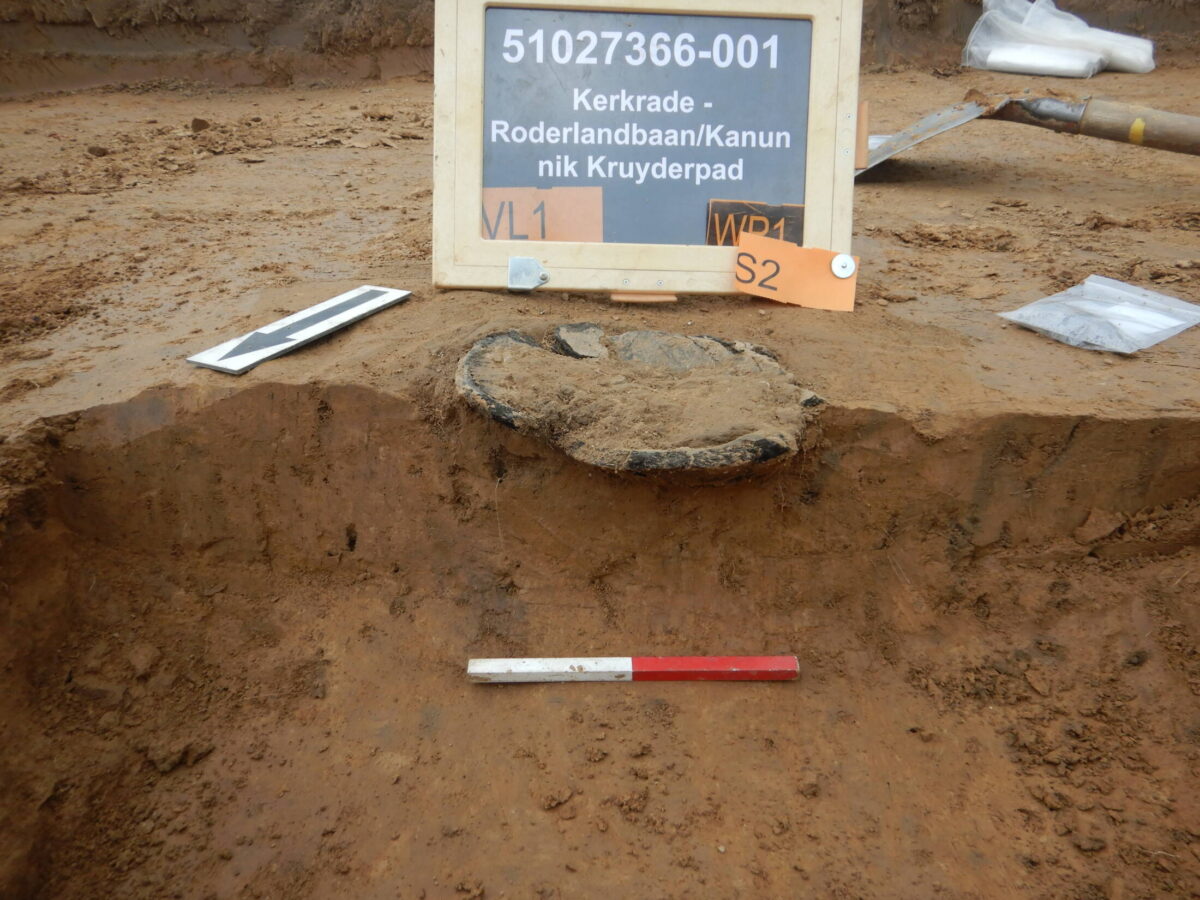
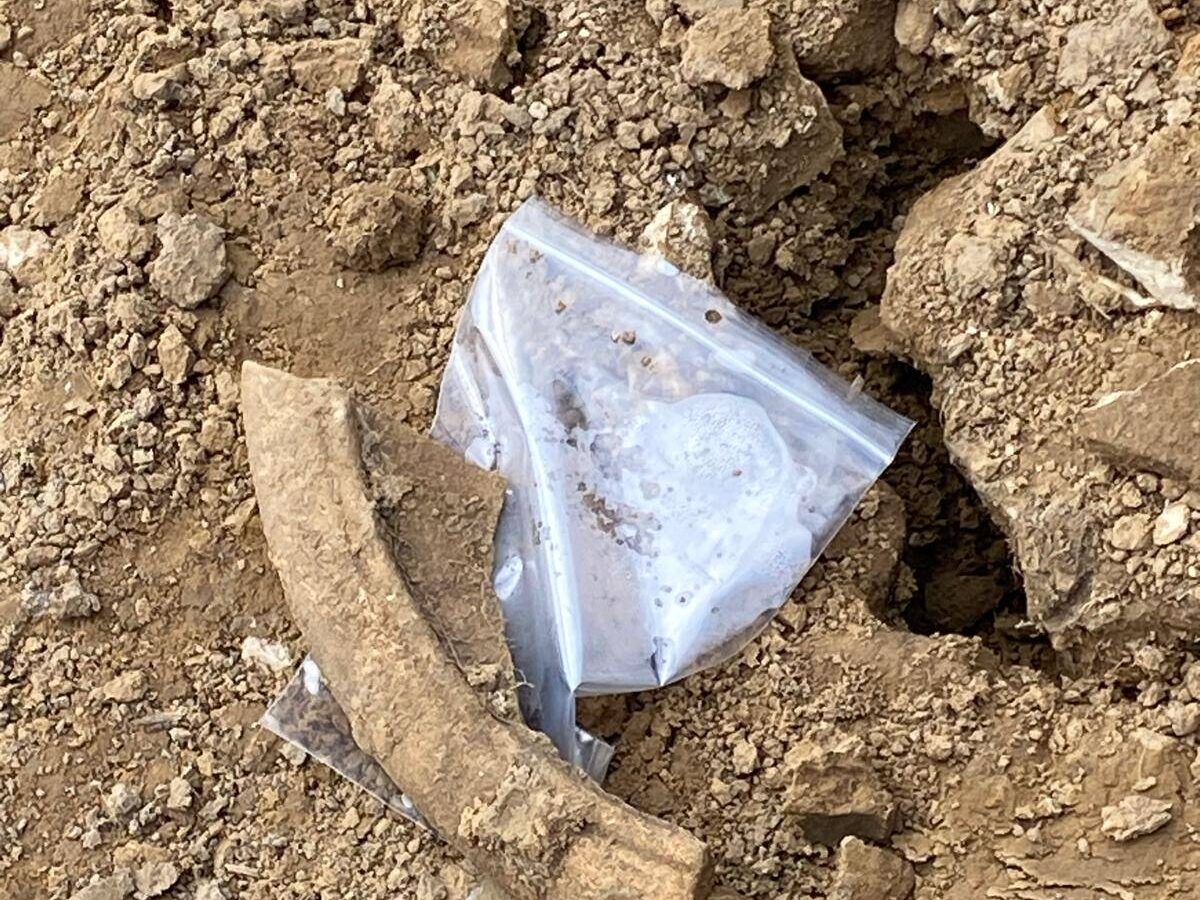
Doubts and breakthroughs
As the excavation progressed, uncertainty grew. Had the Roman remains been washed away? Had there ever even been a villa? Tension mounted… until the first convincing find was made: a beautiful Roman grinding bowl. This could only mean one thing: there had to be more! And indeed, clear foundation remains of a Roman villa emerged.
With this discovery, Kerkrade can officially add a new Roman villa to its history, alongside the well-known villas of Holzkuil and Kaalheide. It is thought that a total of eleven Roman villas once stood in the region, which makes sense given the fertile soil, ideal for agriculture.
Preserving the past
Although the foundation remains have now been documented, the municipality of Kerkrade has chosen to limit further excavations. What remains underground is best preserved for future generations, who may have access to even more advanced research techniques.
This way, the history of Kerkrade remains not only alive but also protected for the future. And who knows what secrets still lie hidden in the soil?
